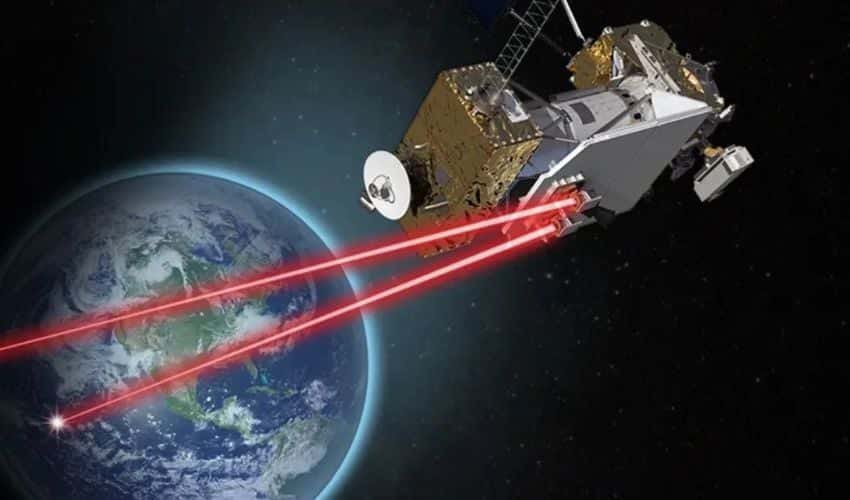CHINA: Chinese scientists have successfully transmitted data from space to Earth at a staggering 1 Gbps speed—five times faster than Starlink by using a low-powered 02-watt laser from a satellite in geostationary orbit 36,000 kilometres above the Earth.
The experiment, led by Professor Wu Jian of the Peking University of Posts and Telecommunications and Liu Chao of the Chinese Academy of Sciences, deployed a novel technique combining Adaptive Optics (AO) and Mode Diversity Reception (MDR). This synergy allowed the team to overcome the long-standing challenge of atmospheric turbulence, which typically scatters laser signals into weak, distorted patches upon reaching Earth.
Using a 1.8-meter telescope at Lijiang Observatory in southwest China, the scientists successfully received and decoded the laser data stream from a classified satellite located 36,705 km away. The system’s advanced hardware included 357 micro-mirrors that reshaped the incoming light and a multi-plane converter that routed the most stable signal paths in real-time using a custom chip-based algorithm.
The results, published in the Chinese-language journal Acta Optica Sinica, show the method significantly boosted data reliability, raising the success rate of usable signal transmission from 72% to over 91%.
The development is another major leap for China’s space laser communication efforts. In 2020, China’s Shijian-20 satellite achieved a record-breaking 10 Gbps laser downlink, though its power specifications remain classified. U.S. surveillance attempts on the satellite reportedly prompted evasive manoeuvres by Shijian-20, further underscoring the strategic importance of this technology.
As global competition in satellite internet and space-based data infrastructure intensifies, this latest Chinese advancement could position the country at the forefront of next-generation communications, far surpassing current low-Earth orbit technologies like SpaceX’s Starlink.
Read also: Pakistan joins Africa-1 submarine cable for faster internet





